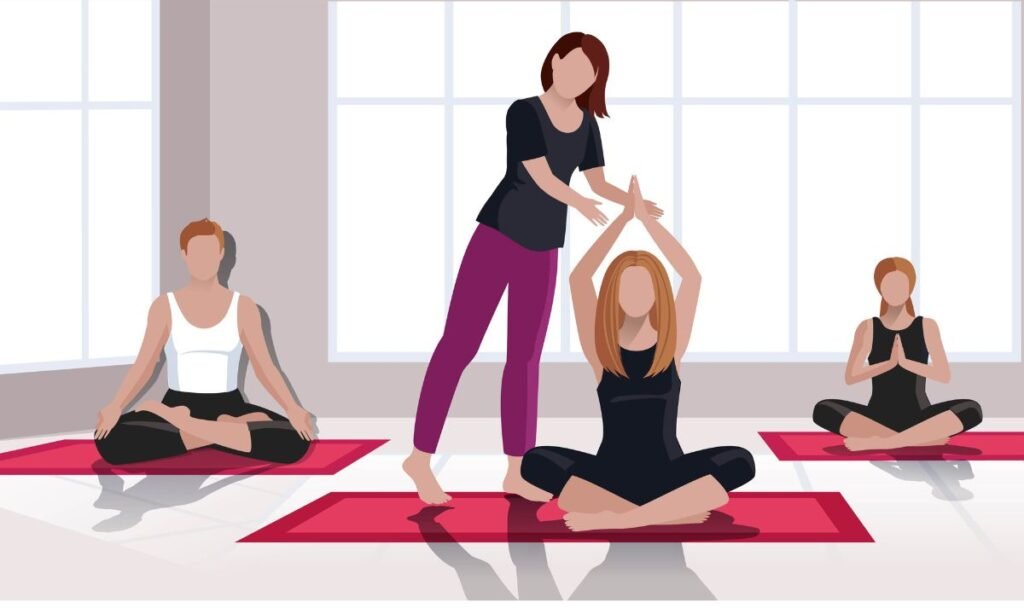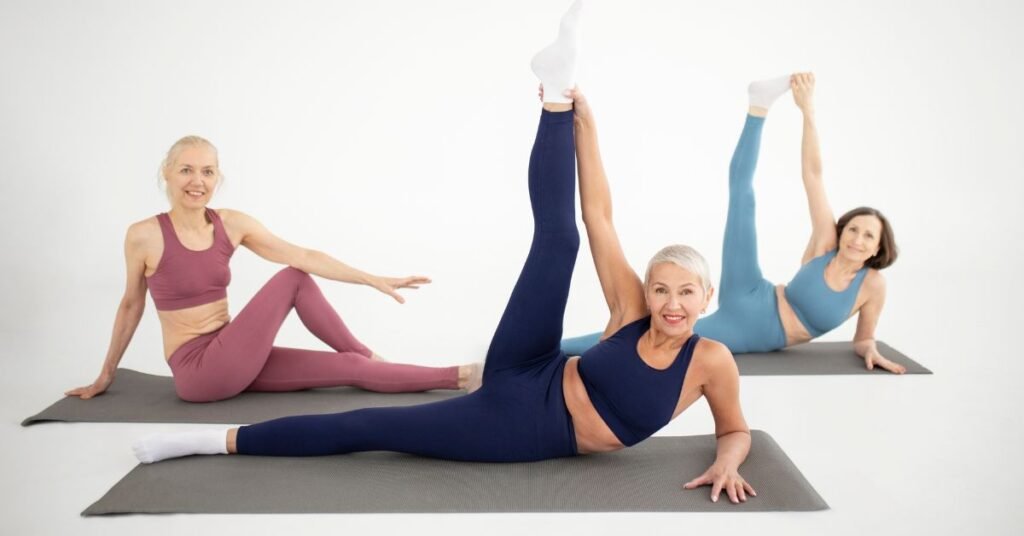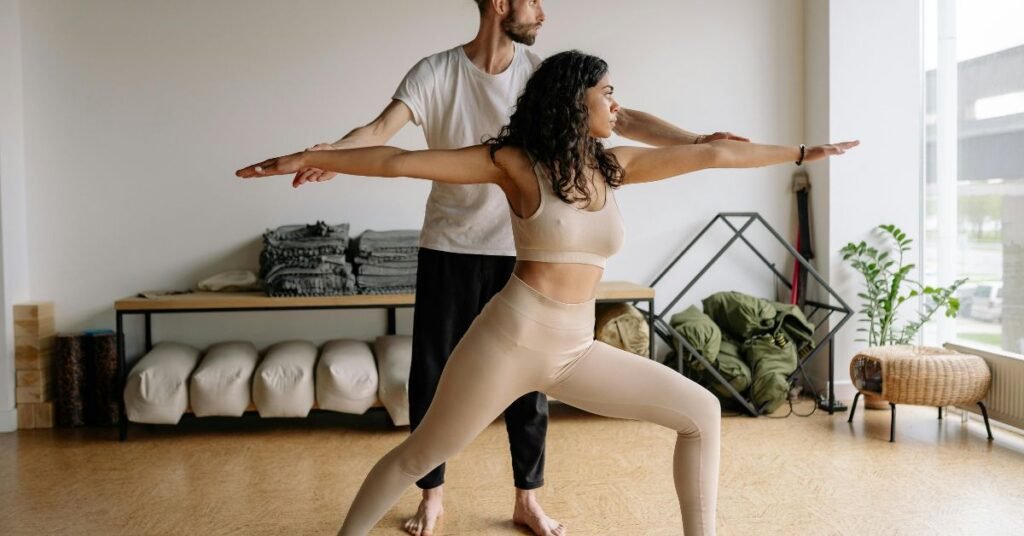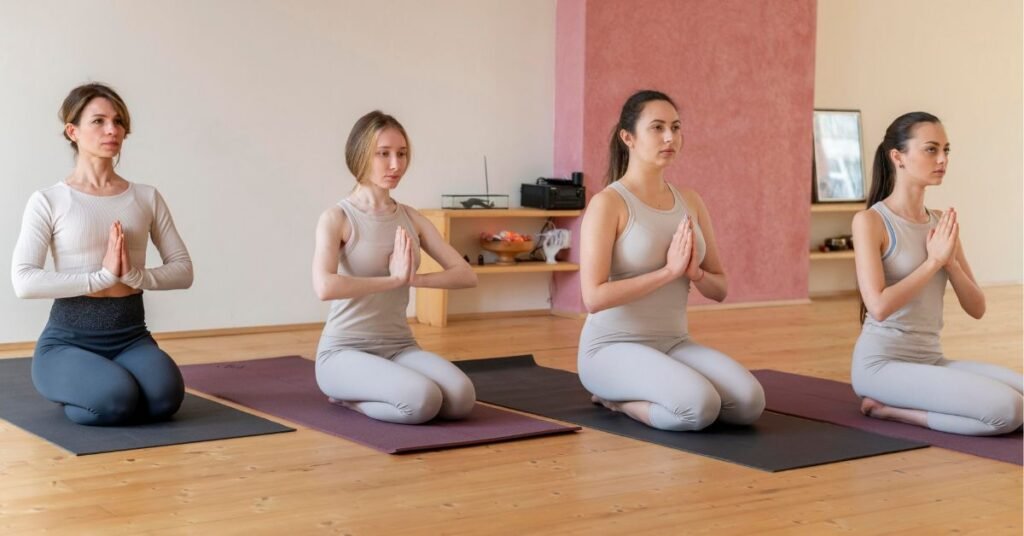Introduction
If you’re looking to build strength with yoga, you might be wondering: Is power yoga or traditional yoga better for strength? The answer isn’t as simple as one being “better” than the other. Both styles offer unique benefits, but depending on your fitness goals, one may be more suited for you than the other.
In this blog post, we will dive deep into power yoga vs. traditional yoga, compare their strengths, and help you decide which practice best supports your fitness journey. Whether you’re a complete beginner or an experienced yogi, this guide will give you the knowledge to choose the best style for strength and overall well-being.
What Is Power Yoga?
Power yoga is a modern, fitness-focused form of yoga that is designed to build strength, endurance, and flexibility. It is fast-paced, intense, and often compared to a high-intensity workout rather than a relaxing stretch session.
Key Features of Power Yoga:
- Fast-moving sequences that flow dynamically from one pose to another
- More physically demanding than traditional yoga
- Focus on building strength and endurance
- Less meditation, more movement
- Often practiced in heated rooms to promote sweating and detoxification
Popular Types of Power Yoga:
- Ashtanga Yoga – A structured and challenging form of power yoga
- Vinyasa Flow – A more flexible, creative style of power yoga
- Hot Power Yoga – Practiced in heated rooms for extra intensity
If you love fast-paced workouts and enjoy breaking a sweat, power yoga is a fantastic option to build strength while improving flexibility.
Readmore: 5 Amazing Reasons to Try Hot Yoga
Readmore: Beginner’s Guide to Kundalini Yoga
What Is Traditional Yoga?
Traditional yoga is the root of all yoga practices. It has been around for thousands of years and focuses on the mind-body connection, breathing techniques, and relaxation. Unlike power yoga, traditional yoga is slower, meditative, and restorative.
Key Features of Traditional Yoga:
- Gentle and slow-paced movements
- Emphasis on breathing and mindfulness
- Focus on relaxation, flexibility, and balance
- Promotes inner peace and emotional well-being
Popular Types of Traditional Yoga:
- Hatha Yoga – A slow and gentle introduction to yoga poses
- Iyengar Yoga – Focuses on precise alignment and longer holds
- Kundalini Yoga – Combines movement, breathwork, and chanting
- Yin Yoga – Slow-paced, deep stretching for flexibility
If you prefer a calm, meditative, and restorative approach to yoga, traditional styles may be your best fit.
Readmore: How to Do Side Lunge Pose (Skandasana)
Readmore: Figure-4 Stretch Poses Guide
Power Yoga vs. Traditional Yoga: Strength Comparison
Now that we understand the basics of both yoga styles, let’s compare their ability to build strength.
1. Upper Body Strength
Power yoga incorporates planks, chaturangas (yoga push-ups), arm balances, and inversions that help develop serious upper body strength. Traditional yoga, on the other hand, includes gentle weight-bearing poses but lacks the intensity required for significant muscle development.
Winner: Power Yoga
2. Core Strength
Both power yoga and traditional yoga engage the core muscles, but power yoga intensifies core engagement by adding more movement and holding challenging poses like boat pose and side plank for longer durations.
Winner: Power Yoga
3. Leg Strength
Traditional yoga includes standing poses like Warrior I & II, Tree Pose, and Chair Pose, which improve leg strength over time. Power yoga, however, incorporates lunges, squats, and fast transitions, making it more effective for muscle endurance and strength in the lower body.
Winner: Power Yoga
4. Overall Muscle Endurance
Holding poses in traditional yoga improves endurance, but power yoga’s continuous movement and high-energy flow challenge muscles even further.
Winner: Power Yoga
5. Flexibility and Mobility
Traditional yoga prioritizes deep stretching and slow movements, making it better for flexibility and mobility. Power yoga improves flexibility, but the fast pace means less time for deep stretching.
Winner: Traditional Yoga
Which One Should You Choose?
The best yoga style for strength depends on your goals:
- If you want intense muscle-building workouts, go for power yoga.
- If you prefer a gentle, relaxing practice that still improves strength, traditional yoga is a better fit.
- If you want a mix of both, consider alternating between power and traditional yoga.
Pro Tip: If you are completely new to yoga, starting with traditional yoga is a great way to build a strong foundation before jumping into power yoga.
Final Thoughts
When it comes to power yoga vs. traditional yoga for strength, power yoga takes the crown for building muscle, endurance, and overall fitness. However, traditional yoga has its own strengths, especially in flexibility, mindfulness, and injury prevention.
The good news? You don’t have to choose just one! Incorporating both styles into your routine can help you achieve a strong, flexible, and balanced body.
So, which yoga style will you try first? Let us know in the comments!
Readmore: The Rising Trend of Power Yoga
Readmore: The Best Foods for a Yogic Diet
FAQs
Q. Can beginners do power yoga?
Yes, beginners can do power yoga, but it’s recommended to start with a beginner-friendly class or traditional yoga first to build a foundation.
Q2. Is power yoga better for weight loss?
Power yoga burns more calories than traditional yoga due to its fast pace and intense movements, making it more effective for weight loss.
Q3. Can traditional yoga help with strength building?
Yes, traditional yoga builds strength, but at a slower rate compared to power yoga. It focuses more on endurance, flexibility, and balance.
Q4. How often should I practice yoga for strength?
For optimal strength gains, practice power yoga 3-5 times per week. Traditional yoga can be done daily for flexibility and recovery.
5. Is hot power yoga safe?
Hot power yoga is safe for most people, but those with health conditions like high blood pressure or dehydration risks should consult a doctor first.

Sonu is a passionate yoga teacher with over 6+ years of experience helping individuals find balance, strength, and inner peace through the transformative power of yoga. As the creator of Pure Yoga Vibes, Sonu shares expert insights, inspiring practices, and a wealth of knowledge to support your wellness journey. Dedicated to creating a space for growth and mindfulness, Sonu’s mission is to make yoga accessible and enjoyable for everyone. For inquiries or collaborations, feel free to reach out at contact@pureyogavibes.com.



